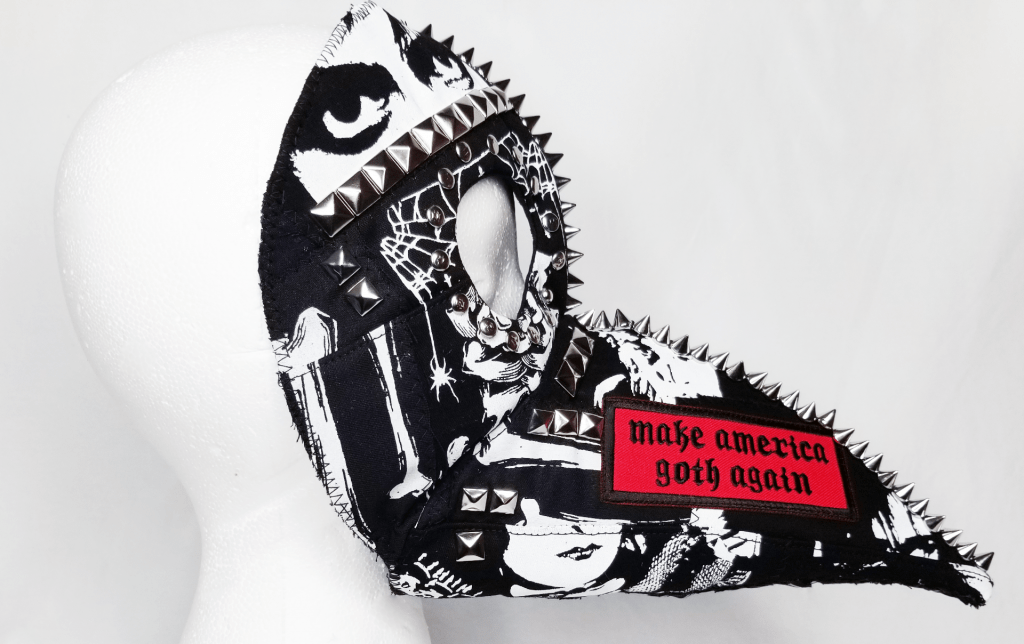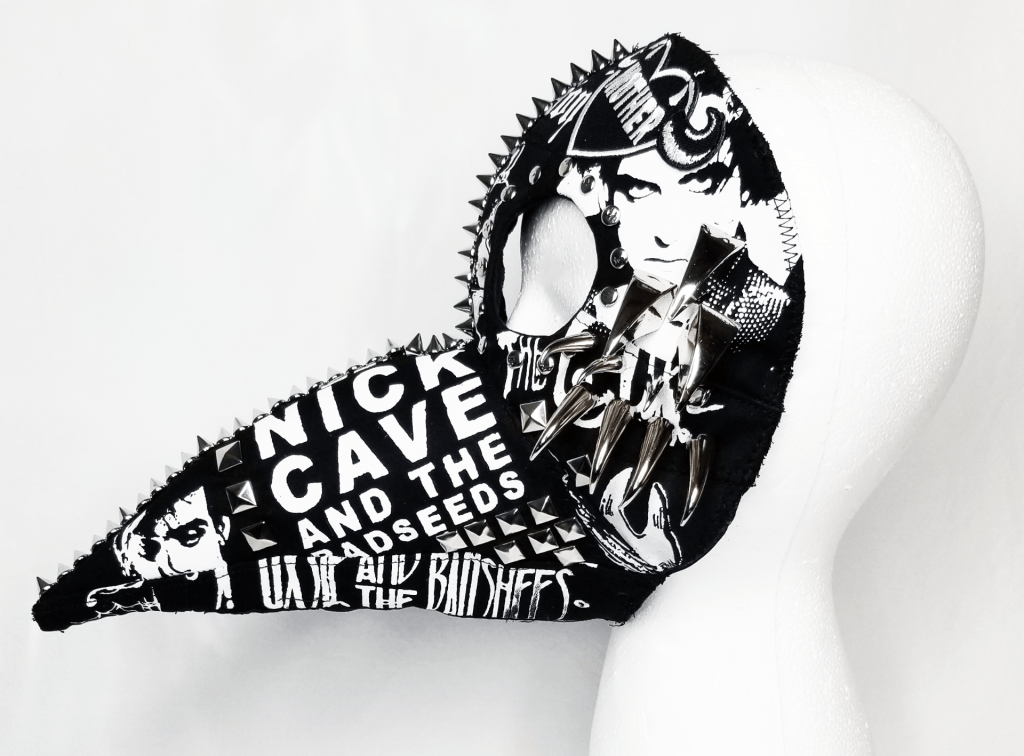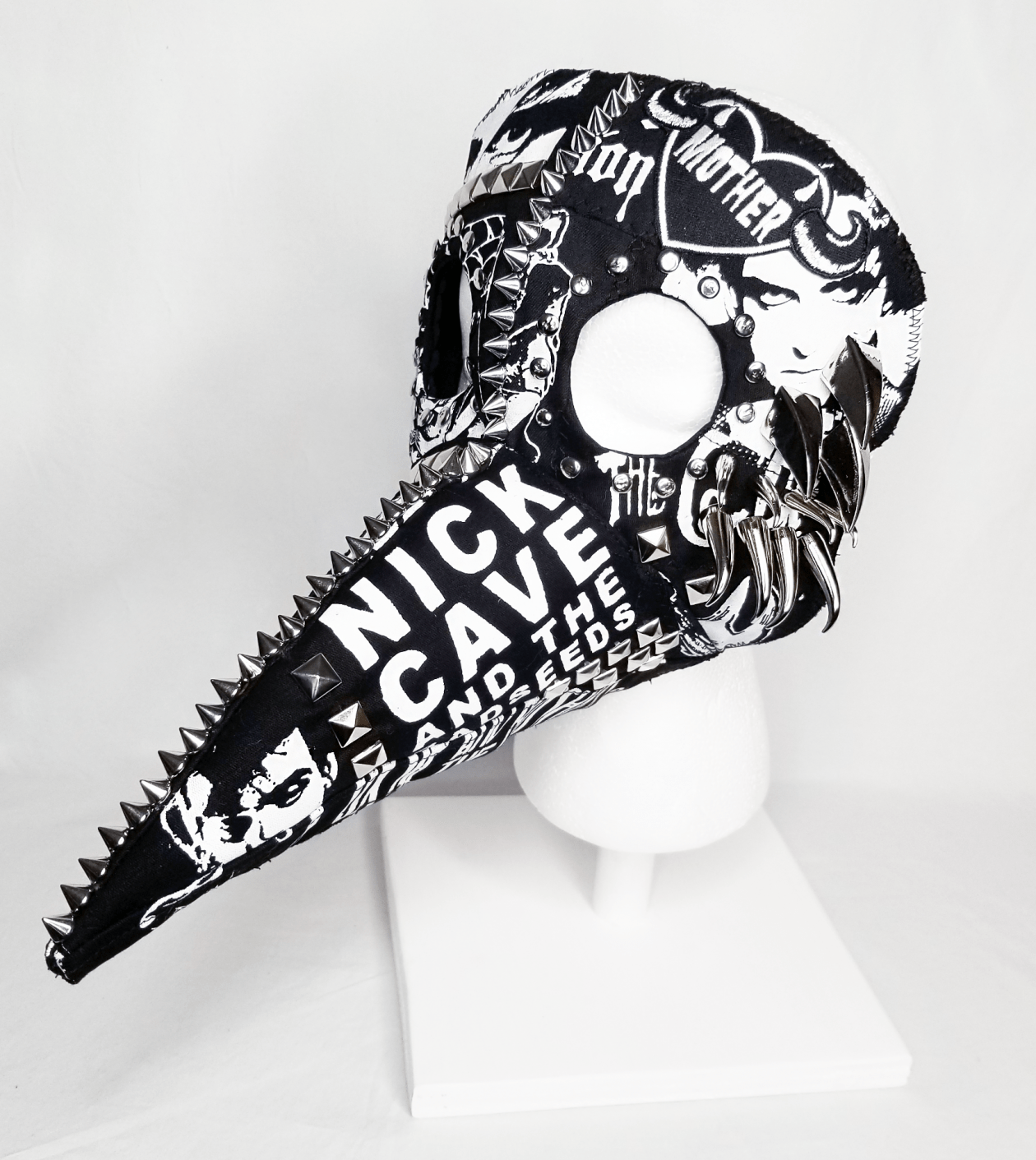Battle Jacket
Borrowing a term, the Spikes mask is designed to imitate the look of a battle jacket, the denim vest covered in patches and studs rooted in the metal community. One of my ongoing projects aside from mask-making during quarantine has been to work on my own vest, adding patches from my favorite bands and others that resonate with my aesthetic. In the early 2000s, I worked at a record store in Boston where I was exposed to a wide variety of musical styles, and found my way to the goth subculture, which has influenced both my musical tastes and personal style, and it is this musical genre that dominates the look of the vest.

The patches on the Spikes mask are goth, post-punk, and metal, arranged on a black twill backing to create yardage that was then cut to the mask pattern shapes.

The mask is further embellished with pyramid studs, rivets, dome studs, and a variety of sew-on and screw-back spikes. The mask is built on a neoprene base, and the mask edge is finished with a zigzag stitch that mimics the patch arrangement. Sewing the patches on a vest can be done by hand or machine, and while I find the hand sewing meditative, I personally prefer the security of the machine stitch. Like the vest, the mask will remain an ongoing project where patches and metal embellishments are added, removed, and adjusted over time. This gives a life to the piece, and lends to the customization and personalization aspect.


For further reading on battle jackets, see this recent article by Laura O’Hagan. (Note: paywalled).
O’Hagan, L. (2021). The anatomy of a battle jacket: A multimodal ethnographic perspective. Journal of Contemporary Ethnography, 50(2), 147-175. https://journals.sagepub.com/doi/10.1177/0891241620950804
This project is funded in part by the Cornell Council for the Arts. 

Leave a comment